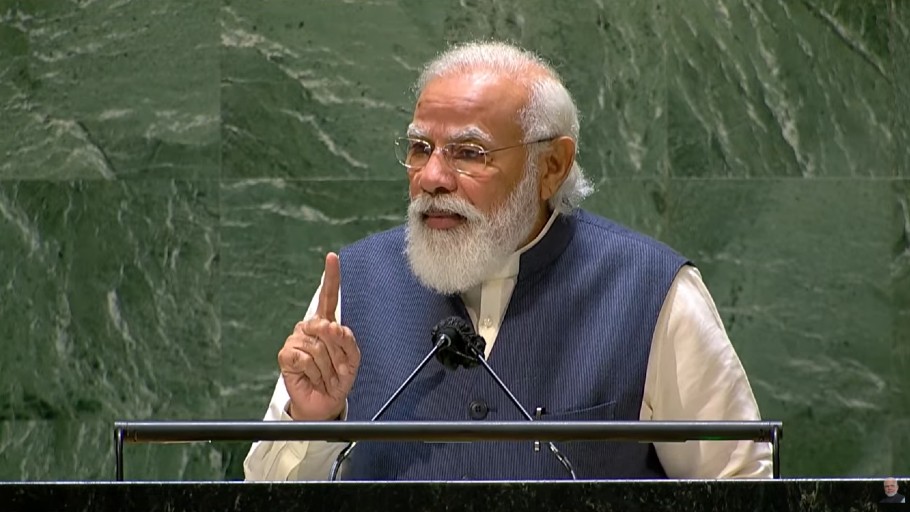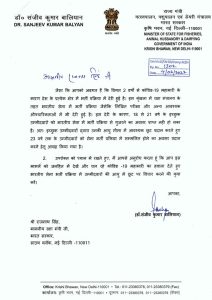
UP campaign: Modi likely to jump in to square up Yogi’s inadequacies
Contrary to BJP’s stout claims, there’s much anti-incumbency in the State; PM may be roped in to close the gaps

The first two of the seven-phased Uttar Pradesh Assembly polls, covering the western part of the State, are finally over. The people’s verdict has been fed into voting-machines, and will be reckoned along with that of the other phases, on March 10. Amid all this, the vexed question is whether the ruling BJP is facing the heat of anti-incumbency to the extent of making its fate uncertain, or whether Chief Minister Yogi Adityanath’s government will be able to romp home once again to get a second term.
Despite its stout claims of a possible victory at the hustings, the BJP has been grappling with farmers’ ire in the Jat belt over three farm laws which had to be withdrawn less than three months before the commencement of polls. Besides, Muslim voters’ turnout in large numbers in their strongholds in the first two rounds of polling, held on February 10 and 14, is being assiduously watched in political circles, for it has the potential to spoil the BJP’s chances.
Significantly, on February 9, a day before the first phase of polling, no less a person than Prime Minister Narendra Modi had said: “There is no-anti-incumbency wave in Uttar Pradesh.” In an interview to news agency ANI, the PM claimed that the BJP has been experiencing a wave in its favour in all the five poll-bound States (Uttarakhand, Punjab, Goa and Manipur, besides UP).
Also read: BJP faces an uphill task to retain bastions in Garhwal
About Uttar Pradesh, the PM went on to add that instead of anti-incumbency there is a “pro-incumbency” trend. He stressed that people “trust double-engine growth”, and the track record of the BJP’s governance shows that it could “deliver on all the promises it had made”.
But, notwithstanding these claims, an elaborate tour plan for UP is being drawn for Modi, to rev up the BJP campaign through the parts of the State that are yet to go to polls. The schedule is between now and the first week of next month, as votes are to be cast for the last phase on March 7. There is also talk of Modi spending three days at a stretch in Varanasi, his Parliamentary constituency, before voting for the new Assembly concludes in UP.
Last December, Modi had been to Varanasi for two days to inaugurate a host of projects in the ancient city. So, another extended jaunt at the same place to cover the nearby areas from there through a personal campaign is indicative of his virtually taking over the charge of the campaign from his other party lieutenants. Earlier, Union Home Minister Amit Shah had toured through parts of western UP and PM had called off one of his own visits to Bijnor in the area. But now it looks a bit different, to say the least.
So, what went wrong?
Thus, the question that arises is what has changed to warrant the top-level intervention. For this answer, one has to look at the polls held so far. In the 113 Assembly seats where voting has already taken place, the BJP’s numbers in the outgoing Vidhan Sabha have been staggering. In the 2017 polls, the party had won 91 of these seats, sparing only 17 for the Samajwadi Party, two each for the Congress and the Bahujan Samaj Party, and a lone seat for the Rashtriya Lok Dal.
Also read: BJP has support of 80% of UP voters, will secure 300 seats: Adityanath
That was the kind of optimal performance the party could put up five years ago. Obviously, it is too difficult to be repeated in these times — frayed as they are by one of the longest spells of farmers’ unrest, and what at one stage the government called a “once-in-a-century pandemic”. COVID has wrecked jobs and dried up the sources of livelihood for many. The farmers’ stir lasted a year, or until the government repealed the controversial laws they were agitating against, mainly because youth in villages couldn’t be absorbed in non-farm jobs — though this has been the case since before the pandemic.
The truth of double-engine
The economy has been sliding, and jobs started becoming scarce since January 2018, which is two years before the outbreak of the pandemic. The decline has been due to demonetisation in 2016 and the launch of the GST regime in 2017 — with such intricacies that traders and businesses took time to comprehend the new taxation system and act accordingly. Apart from this, there have been issues between the Centre and States over the sharing of revenues generated under GST. The non-BJP State governments made noises to wrest their share of taxes. But the BJP-led dispensations in the provinces couldn’t do so despite their often flaunting the “double-engine” story.
Also read: Each region of UP thinks differently; which way will the votes go?
Uttar Pradesh doesn’t look to be an exception to this. More so since the State could not mobilise resources to fill vacancies that routinely crop up and were identified in sectors run by it. But more than the dearth of funds, the administrative ineptness on the part of Yogi’s team — as evidenced by last year’s second wave of COVID — appears to be the reason for the current poll-related uncertainties that the ruling party is grappling with.
Anti-incumbency wave
The palpable inadequacies — whether in tackling the virus last year or, before that, the inability to provide transport to migrant labourers trooping out of metropolises like Delhi or Mumbai to escape the 2020 lockdown and reach their hometowns in UP — drew criticism for the Yogi government from both the public and from within the BJP.
Former Union Minister of State and Bareilly MP Santosh Gangwar wrote to Yogi last May about doctors’ apathy towards COVID patients and the lack of government assistance to hospitals in setting up medical oxygen plants (unlike the Madhya Pradesh government, which offered 50 per cent cost-in-grant for such plants in hospitals across the State).
The government tried to address the heat over the mishandling of the pandemic and the lockdown by providing free rations to the poor, needy and deserving. Though this met the immediate needs of many, it could not offer the hope of paid work amid job losses suffered by the ration beneficiaries. Instead, what started adding up was anti-incumbency for the Yogi government.
Another Minister writes
So much so that Union Minister and Muzaffarnagar MP Sanjeev Balyan realised this, though belatedly. He wrote to Defence Minister Rajnath Singh on February 4, or just six days before the polls for Assembly segments in his constituency, about the hopelessness dogging most job-seeking youth in that area. There was anxiety that they may cross the maximum age for recruitment to the Army due to hiring being kept in abeyance for the last couple of years or so in view of the pandemic.

Hiring was stalled not only for the defence forces, but also for myriad other organisations, putting a question mark over age-linked eligibility and other issues for job aspirants. Some of them often gather at Delhi’s Jantar Mantar to register their protest and draw the government’s attention to their plight. Though Rajnath, after Balyan’s letter, indicated that the government rules may be reviewed to give an age relaxation to youth who are their losing their eligibility for no fault of theirs, a government order in this respect is still awaited.
So, the government’s idea is to undo the damage amid deepening anti-incumbency in the times of polls in UP as well as the other States. Yet, a chance for it to meet the demands of the youth or any other section before the polls is simply not there because of the Election Commission’s Model Code of Conduct that bars such moves till the polls are over.
PM’s positioning
Since Yogi Adityanath is among the most ‘visible’ Chief Ministers of the country, it is going to be an uphill task for anybody else to become the face of his campaign. It may look like overstepping the Chief Minister. This is why Amit Shah and other Union Ministers, though assigned specific regions in the UP campaign, could not become the main face of the electioneering.
Thus, Modi is the only person left with the desired image and may be more, that UP BJP can avail of from the central reserve that has still not been fully utilised in the current polls. More so, since he can easily be recognised by the electorate as the main voice that can be heard above that of both Yogi and the BJP.
Modi addressed a rally in Kanpur on Monday, February 14. He may well go in for more in other parts of the State to reconnect with the voters though only a little time is left for him to take the chance. And it is so amid mounting risk not only for Yogi but also the veritable edifice built by the BJP throughout the country over the past decade.
(The writer is an independent journalist based in Delhi-NCR. He tweets @abidshahjourno.)


